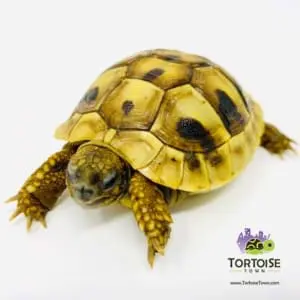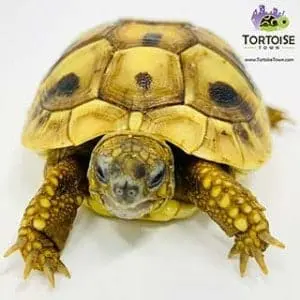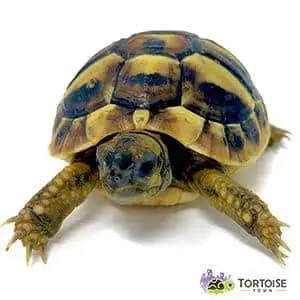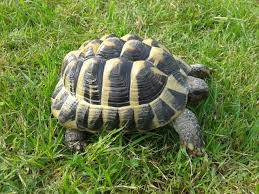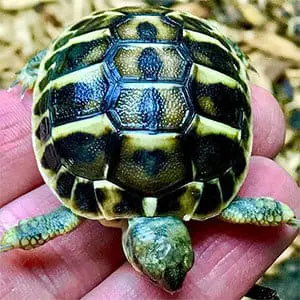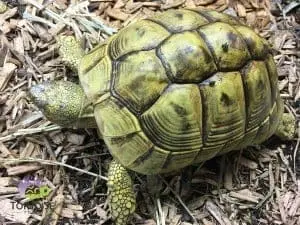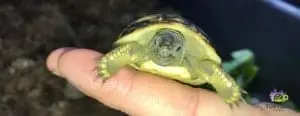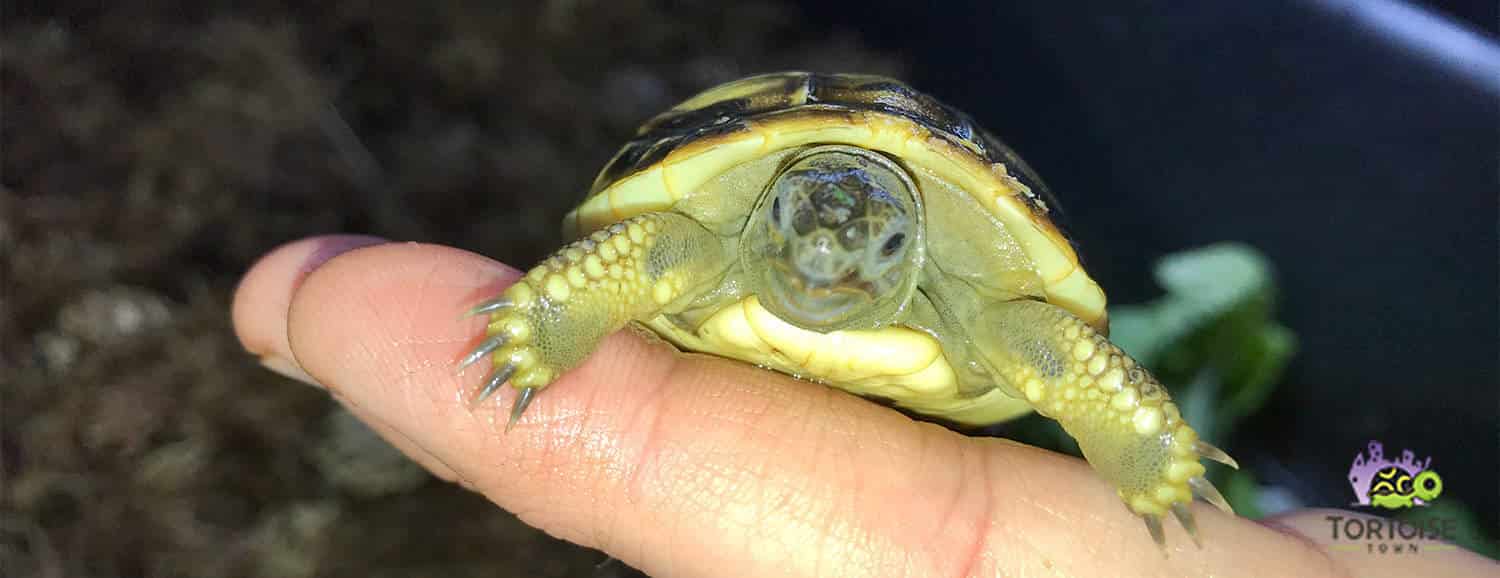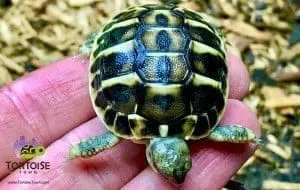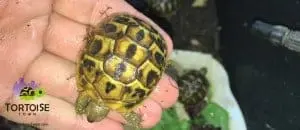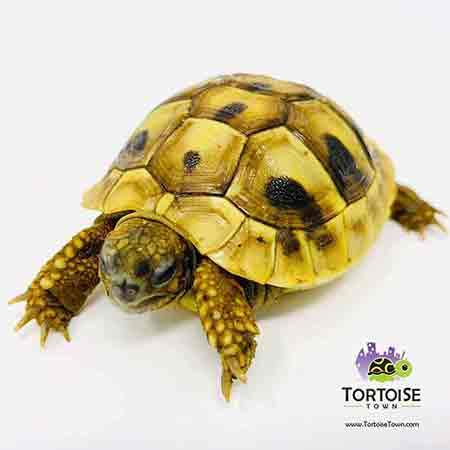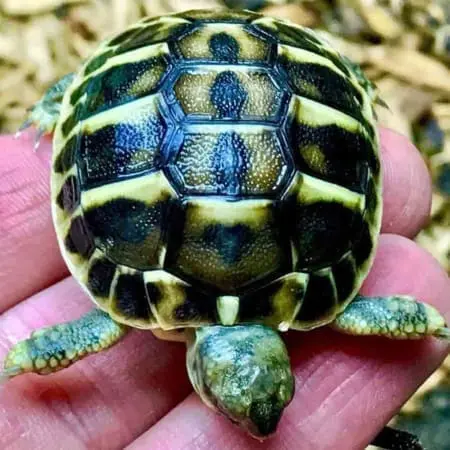Hermann’s Tortoise Habitat
Hatchling Testudo hermanni are suitable for indoor keeping and by choosing this method in the beginning we are protecting them from harsh elements and possible predation. Outdoor keeping at this stage of life does work well but can pose problems especially for an inexperienced keeper. We have managed to successfully house neonates and juveniles in both outdoor and indoor settings but you may find it more comforting and easier to monitor them if indoor housing is your method of choice. Never use glass aquariums for tortoises. If you are looking to also get supplies of a setup, we HIGHLY recommend our complete deluxe tortoise habitat kit.
Cover the sides if you’re using a glass Hermann’s tortoise enclosure
They create a constant “greenhouse” effect inside causing them to rapidly dehydrate. They also drive the tortoises crazy because they cannot comprehend what glass is and why they can see through it but not move forward. This sends stress levels through the roof. Use Rubbermaid containers instead or “tortoise tables” built from ply wood. For 2 to 3 hatchlings, a container roughly 2×3 feet will suffice. It should be at least 6” tall. Do not go too big while they are so small because they may become “lost” in the environment and you will find yourself constantly digging around to find them. Be sure to explore all of the Hermann’s tortoise care information we provide as well. Also, be sure to check out the baby Hermann’s tortoise care articles in our tortoise care blog.
Adjusting the size of the Hermann’s tortoise habitat
As a baby Hermann’s tortoise grows, the size of the container can be increased to accommodate them. Several neonates can be raised together without issue if space permits but watch out for any weaker individuals who may have trouble competing for food. A suitable substrate is clean top soil mixed with coconut coir or peat moss. I prefer to ad sand into this mix to help generate a substrate that replicates what they experience in nature more closely.
Avoid using sand as Hermann’s tortoise substrate!
However, using sand has been known to cause impaction in reptiles which can lead to death. Although in more than 20 years we have never experienced this with any of our tortoises kept on it, this does not mean it won’t happen to your animal(s). Use caution or simply don’t use the sand. The substrate can be up to 4” deep to allow for burrowing. Burrowing is 100% normal! Do not be alarmed by his behavior while they are this young. They are babies after all and babies sleep. I also recommend adding cypress mulch as a 2” top layer but you can also mix it in to the existing substrate. The mulch aids in keeping an adequate humidity level which should be around 70%.
Do not let the substrate dry out entirely by keeping a spray bottle filled with water on hand to mist the enclosure. A common misconception regarding tortoise keeping is thinking they must be kept very dry. This is in fact not true and we now know that pyramiding (unnatural, lumpy growth of the carapace scutes)is directly linked to improper humidity levels along with insufficient hydration. In nature, baby tortoises spend a great deal of time burrowed into the ground, under leaf litter or jammed under debris. There, it is humid, moist and dark.
Keep your baby Hermann’s tortoise substrate damp by using a sprayer!
They are programmed to hide and typically do not venture out anywhere near as much as older specimens. By doing this they are constantly subjected to a higher level of humidity than one might assume. Although wild tortoises can sometimes appear lumpy or pyramided, this is only in extreme cases where severe droughts are common. Most will exhibit beautiful growth and smooth shells. In the evening after the lights are turned off, I place the lid on the rubbermaid containers that house our baby tortoises. This helps to mimic the dark, humid refuges the neonates confide in when in nature.
The humidity builds up overnight and in the morning it is released when the lids are taken off. I do not doubt for one second that this method has something to do with the natural, smooth shells our tortoises attain as they grow.
Hermann’s tortoise water
A very shallow water tray (0.5”) can also be provided to the babies so that they have constant access to fresh water. Drinking is crucial for baby Hermann’s tortoises and additional soaks for 15 minutes in luke warm water, 3 to 4 times weekly are also wise. Half logs, upside down tupperware with an entrance hole cut in, drift wood and cork bark make for excellent hide aways. These will be used frequently by the occupants.
Fake plants or edible weeds may be grown in the indoor unit if you wish to do so. I opt against it for the sake of simplicity and cleanliness because we are dealing with a high number of animals. The use of plants absolutely does not “make” or “break” the enclosure for us especially since our tortoise spend a great portion of the year outdoors in very natural conditions.
Juvenile Hermann’s tortoise for sale – Juvenile Hermann’s tortoise habitat
Housing larger juveniles and adults indoors is possible especially during the winter. By using the “tortoise table” method, an 8×4 foot rectangular enclosure out of ply wood can easily be constructed. This will house a trio of adult tortoises in the 4 to 6” range for part of the year but as always, going as big as possible is best. Aggressive animals must be watched closely. Even female Hermann’s tortoises can inflict wounds on one another especially if they are carrying eggs and fighting for a nesting area. Males may naturally engage in combat but be ready to separate them if it gets out of hand.
It is part of the natural daily cycle for members of the Testudo hermanni species complexto encounter others of their own kind. While tortoises do not suffer from loneliness or experience emotions, it is stimulating and nothing less than natural for them to be subjected to other members of their species/subspecies.
However, it is always wise to have extra enclosures ready to house aggressors to prevent serious damage to the other conspecifics. Cypress mulch 4 to 6” deep works best for adults but you can also use the same combo that I described above for hatchlings. Large pieces of cork bark or driftwood make for excellent decor inside the enclosure. Larger Rubbermaid containers turned upside down with an entrance hole cut into it can be made into a “humid hide” for younger Hermann’s tortoises to help keep up with smooth shell growth.
A humid hide is essential for your baby Hermann’s tortoise for sale
The container can be filled with moistened sphagnum moss. Change the moss frequently because it can become a breeding ground for harmful bacteria. For full-sized adults, I prefer to use straw inside any hide-box given to them. It is not as messy and allows the adults access to a cozy, dry refuge. A stainless steel water dish no more than 2” deep should be set into the cypress mulch so that the animals always have fresh water to drink and soak in.
This must be changed frequently because the tortoises will defecate in it often. Even for larger T. hermanni, hydration is crucial for long term success. This is especially evident with the western subspecies which seems to “dry out” and become dehydrated quicker than their eastern counterparts.
Hermann’s tortoises undoubtedly do best outdoors and they can be kept in this manner from at least April until October in most parts of the USA. A strong outdoor enclosure placed in a sunny location can be constructed out of pressure treated wood, stone wall or landscaping timbers.
Size of Hermann’s tortoise enclosure
For a group of 2 males and 6 females, the unit should measure at least 12×8 feet with a height of 18”. A graciously planted outdoor pen situated on well-drained soil makes for a great captive environment for these tortoises. I recommend removing the existing soil especially if it does not drain well. Replacing it with a mix of clean topsoil, pit gravel and sand makes for a nice, naturalistic terrain for the occupants. Be creative with the terrain and rather than leaving it flat, allow sloping areas, and uneven spots with higher ground.
Although Hermann’s tortoises prefer a bit more humidity in their environment than most other Testudo, they should never be subjected to consistent damp situations. A variety of planted, edible weeds to promote natural grazing is suggested as well as an array of decorations like logs, rocks, slates, shrubs, African grasses, and bushes, for exercise, hiding and burrowing. Some excellent plant choices are spirea, hosta, knockout rose, hibiscus, fountain grass, maiden grass, sedum, yarrow and Mediterranean heather. Be sure to consider the adult size before setting your habitat or purchasing your new tortoise for sale.
Explore all of the Hermann’s tortoise care section provided by our biologist
- Hermann’s tortoise care
- Hermann’s tortoise lifespan
- baby Hermann’s tortoise diet
- Hermann’s tortoise water
- baby Hermann’s tortoise humidity
- Hermann’s tortoise temperature
- Hermann’s tortoise size
- baby Hermann’s tortoise habitat
- Hermann’s tortoise substrate
- Eastern and Western Hermann’s tortoise lighting

